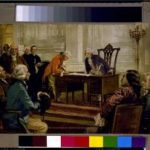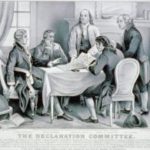Read the following descriptions in this quiz and decide who should be able to serve on a jury and explain why. After you have recorded your initial impressions, review them with another student. Working together, the class will draft a list of characteristics that they think would qualify someone to serve, then compare them to the actual qualifications.
Voir Dire Simulation
In this lesson, students will role play real lawyers as they carry out a voir dire simulation for jury selection. They will draft lists of favorable characteristics of jurors beforehand to aid in their questioning. Then, students will be presented with a list of thirty potential jurors and will impanel either a six-person or a twelve-person jury based on the size of the class. By reflecting on the impaneled jury towards the end of the session, students will think critically.
The Constitutional Convention: Fine Tuning the Balance of Powers
History is the chronicle of choices made by actors/agents/protagonists in specific contexts. This simulation places students in the midst of the Constitutional Convention, after the Committee of Detail has submitted its draft for a new Constitution on August 6. With that draft’s concrete proposals on the floor, students will ponder questions such as: Is this the Constitution we want? Are the people adequately represented? Are the branches well structured? By engaging with these questions mid-stream, before the Convention reached its final conclusions, students will experience the Constitutional Convention as process, a supreme example of collective decision-making.
The Constitution: Drafting a More Perfect Union

Students will analyze an unidentified historical document and draw conclusions about what this document was for, who created it, and why. After the document is identified as George Washington’s annotated copy of the Committee of Style’s draft constitution, students will compare its text to that of an earlier draft by the Committee of Detail to understand its evolution.
The Declaration of Independence: From Rough Draft to Proclamation

Students will analyze an unidentified historical document and draw conclusions about what this document was for, who created it, and why. After the document is identified as Thomas Jefferson’s “original Rough draught” of the Declaration of Independence, students will compare its text to that of the final document adopted by Congress on July 4, 1776 and discuss the significance of differences in wording.
Should the Voting Age Be Lowered to 16?
Using this resource, students will view short C-SPAN video clips exploring the background and different arguments surrounding the question over the current voting age. This deliberation has students learn about the history of lowering the voting age and explore the question: Should the voting age be lowered to 16?